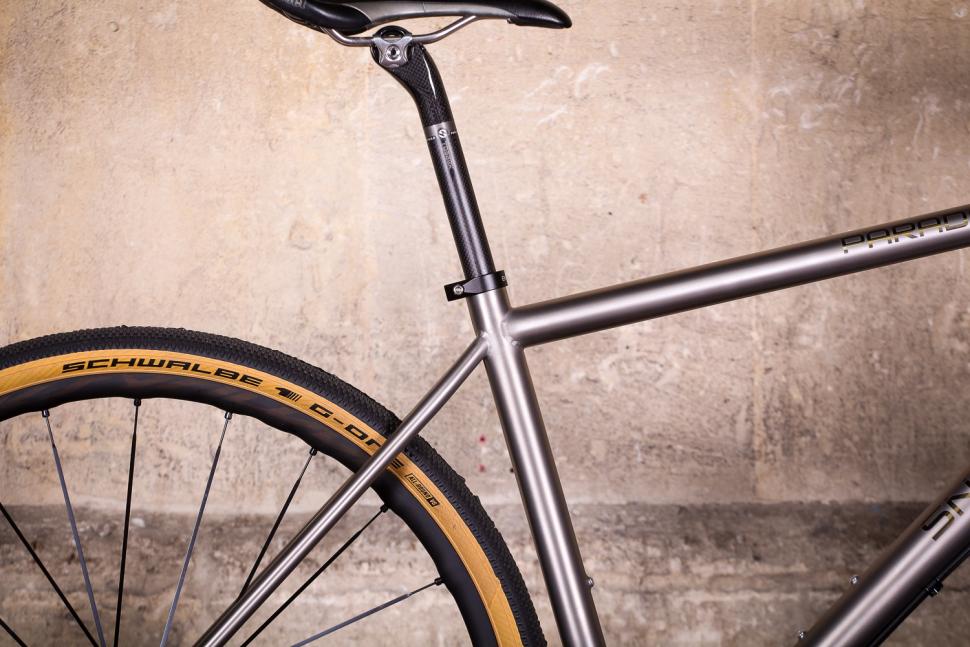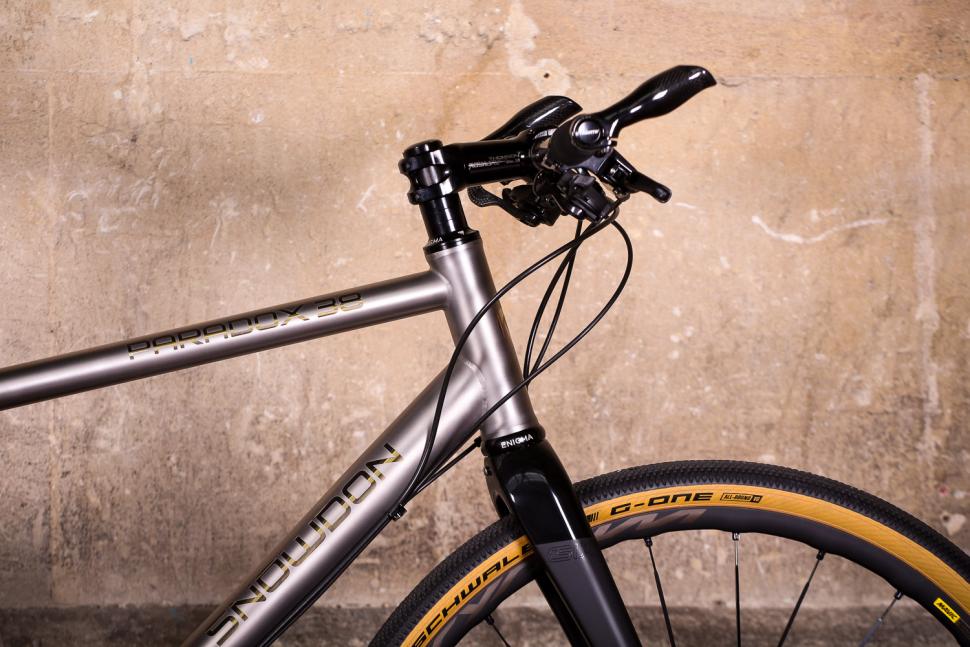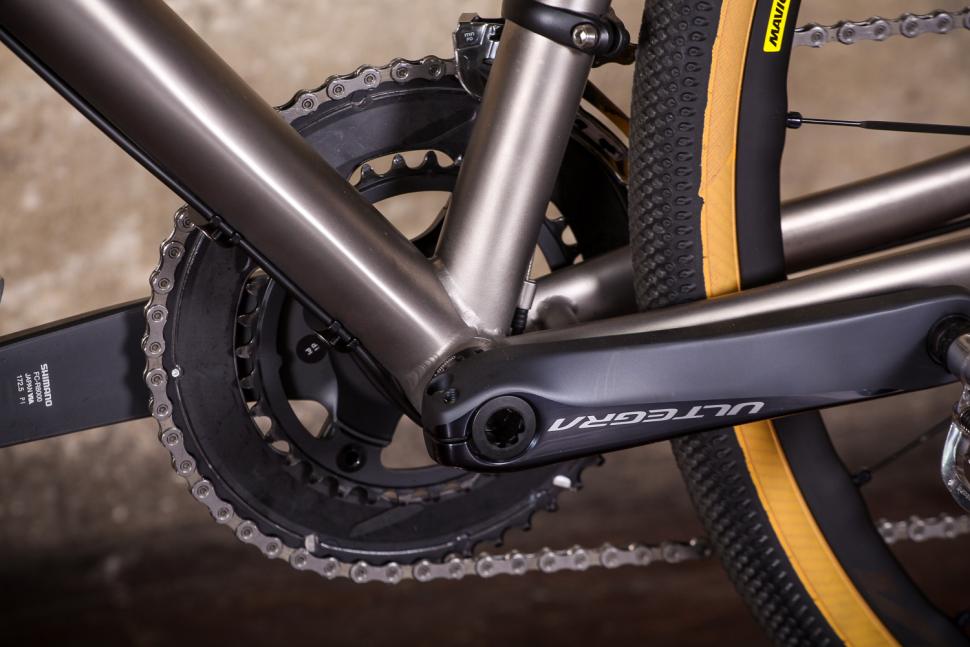- News
- Reviews
- Bikes
- Accessories
- Accessories - misc
- Computer mounts
- Bags
- Bar ends
- Bike bags & cases
- Bottle cages
- Bottles
- Cameras
- Car racks
- Child seats
- Computers
- Glasses
- GPS units
- Helmets
- Lights - front
- Lights - rear
- Lights - sets
- Locks
- Mirrors
- Mudguards
- Racks
- Pumps & CO2 inflators
- Puncture kits
- Reflectives
- Smart watches
- Stands and racks
- Trailers
- Clothing
- Components
- Bar tape & grips
- Bottom brackets
- Brake & gear cables
- Brake & STI levers
- Brake pads & spares
- Brakes
- Cassettes & freewheels
- Chains
- Chainsets & chainrings
- Derailleurs - front
- Derailleurs - rear
- Forks
- Gear levers & shifters
- Groupsets
- Handlebars & extensions
- Headsets
- Hubs
- Inner tubes
- Pedals
- Quick releases & skewers
- Saddles
- Seatposts
- Stems
- Wheels
- Tyres
- Health, fitness and nutrition
- Tools and workshop
- Miscellaneous
- Cross country mountain bikes
- Tubeless valves
- Buyers Guides
- Features
- Forum
- Recommends
- Podcast
TECH NEWS
First look: Snowdon’s Paradox 38 flat bar titanium gravel bike
Last year we tested the Snowdon Paradox, the first flat bar titanium road bike from the new Bristol-based brand, and this year it has followed up with a gravel version called, rather simply, the Paradox 38. We’ve just taken delivery of the new bike to review, but here’s a first look at all the important details before young Mat swings a leg over it.
First ride review: Snowdon Paradox
We’re used to gravel bikes having a geometry that is different to the road bikes they are loosely based on, but in the Paradox 38 we find the exact same geometry as the road-focused Paradox 28 we tested last year. The key difference between the two is found when examining the tubes: thicker walled titanium tubes boost the strength and stiffness to suit the rugged terrain this model is intended to be capable of conquering.
By far the clearest difference between the two models is in the tyre clearance. The new gravel bike accepts both 700 x 38mm or 650b x 50mm, easily accommodating most of the new gravel-specific tyres that have come onto the market in recent years.
- 18 of the best 2018 gravel & adventure bikes
As with the bike we tested last year, this new one is made from 3AL 2.5V seamless double butted titanium, with the manufacturing taken care of by British company Engima Bicycle Works. It’s finished with an Enigma C-Six carbon fork.
Comfort is a big factor for Snowdon, and along with the firm belief in wide tyres and titanium’s legendary compliance, the compact frame design ensures a healthy length of exposed 27.2mm seatpost for more flex at the saddle.
It’s one of the few (in fact, it’s the only one we know of) gravel bikes designed around a flat handlebar. Snowdon specs up to a 600mm (23.6in) width handlebar which it reckons “open up the rider’s chest and enable them to breath deeper and thus take on more oxygen.”
There is a good case for flat bars, as Mike explained in his review last year: “Not everyone wants or needs drop bars. For some it's health reasons – maybe arm, shoulder or back issues prevent placing a lot of weight forward. Perhaps they want a more upright stance for dealing with traffic, or neck issues come to the fore with more bent-over positions. Maybe they just want to enjoy the view, or prefer thumb/grip shifters.”
Snowdon only offers the frameset, with prices starting a £2,150 and there are plenty of optional extras like custom geometry, additional braze-ons and a choice of disc or rim brakes. Each frame takes 60-120 days to be built and comes with a lifetime warranty.
To let us put the new bike through its paces, Snowdon kindly provided a fully built bike, centred around the brand new Shimano Ultegra R8000 mechanical groupset with Metrea hydraulic disc brakes and shifters, and Mavic Kyrsium All Road wheels shod with Schwalbe G-One 40mm tyres.
Frame weight is a claimed 1,350g and the complete bike as pictured here is 9.74kg (21.47lb).
That’s the first look then, watch out for a review soon, and in the meantime, you can find more information at www.snowdonbike.co.uk
David worked on the road.cc tech team from 2012-2020. Previously he was editor of Bikemagic.com and before that staff writer at RCUK. He's a seasoned cyclist of all disciplines, from road to mountain biking, touring to cyclo-cross, he only wishes he had time to ride them all. He's mildly competitive, though he'll never admit it, and is a frequent road racer but is too lazy to do really well. He currently resides in the Cotswolds, and you can now find him over on his own YouTube channel David Arthur - Just Ride Bikes.
Latest Comments
- mikewood 1 hour 53 min ago
Surely actually hitting another road user PROVES their driving was dangerous! There's no opinion involved...
- ktache 1 hour 58 min ago
I realised some time back, that if I was running a bit late at work and needed to get a wriggle on to catch the train, that I make up most time on...
- eburtthebike 2 hours 4 min ago
Obviously they'd watched the Panorama travesty.
- Mr Anderson 2 hours 8 min ago
Two more years Geraint?
- Rendel Harris 2 hours 37 min ago
In fact the last three Tours have started, respectively, in Copenhagen, Bilbao and Florence so the tradition of alternate years seems to have been...
- PenLaw 2 hours 59 min ago
Where were you on the morning of the 18th January?
- LookAhead 3 hours 2 min ago
The point is that mudguards take up space (between the chainstays, under the fork crown, etc.) that the tires can no longer occupy, so the max...
- tony.westclassics@live.co.uk 3 hours 37 min ago
Has anyone tried to cancell there Discovery+ sub, they try every trick in the book to keep your money, I tried, got to pass word and another page...
- tony.westclassics@live.co.uk 3 hours 47 min ago
What ideot invented this, you have to buy pedels AND she,s, SO my Sidi,s are no good for them, they sit down and think of more ways of get peoples...














































Add new comment
17 comments
Oh and no mudguard eyelets, you spend that kind of money you want a bike to do a multitude of tasks and to cater for the fact that it will likely be used on the road in the winter. I really don't get why frame builders/companies are not putting guard and rack mounts on these types of bikes.
It's the difference between a sale and not because the aggro of aftermarket clamp on guards and being reduced to fitting a post mount or frame bag instead of a pannier will definitely sway some.
As others have said, 'gravel' isn't a new thing, just tyre sizes are somewhat changed but the trend for bikes not to have mounting points is a retrograde step, even the old MTBs had rack and guard mounts.
This was my carpe diem as I sold it, 54cm frame was 1590g, full carbon Sintema mud forks add a bit of weight compared to some but solid as a rock, 40mm 700C tyres with guards easily and fitting them and a rack was simple. Even in this lower end build it came in at 9kg with pedals.
carpe_diem.jpg
Hi. All our fames are custom built to order and can include braze-ons for racks and mudguards if desired.
Tim
Arguably, the flat-bar gravel bike never left: Carrera Subway, Raleigh Strada, Pinnacle Lithium - are all slightly updated variants on the old school rigid MTBs of the 80s and early 90s. And a lot of normally roady hybrids - Boardman, Hoy etc - will take 35-40mm semislicks, making even fairly gnarly trails manageable.
Paradox 38 ain't a new thing. But it is a very pretty and expensive thing.
Very much agree - I run a Boardman Hybrid Pro (alu flat bar frame) for around-town-fun, originally bought 6 years ago and currently 1x11 with 650b Hunt wheels and 45mm tyres on them - perfect for urban crusing and the many gravel paths near me.
Nice looking gravel bike, sorry ,flat bar road bike with wide tyres. The only problem I have with”gravel bikes” is buying all the stuff that goes with it, gravel shoes plus special gravel socks, gravel shorts and top, specially developed gravel helmet, and last but by no means least, what gravelist could possibly hit the gravel,get it, without wearing the latest in high performance gravel mitts. As old Abe said, “you can fool some of the people all of the time and all of the people some of the time, but you can’t fool all of the people all of the time”.
Me too. My 1991-ish dave yates mountain bike came with Kona Project 2 rigid forks. It's currently fitted with Pace RC35s which are suspension forks for 10 minutes after I strip and grease them and then turn into rigid forks .
.
My Mum still has her 1995 Orange P7 with the pace carbon forks forks and gold Mavic rims and it weighs less than most modern xc bikes. It's gorgeous.
its a mtb, with different name
No it isn't - it doesn't have any suspension.
I agree with the first comment - it's a hybrid with wide tyres.
I remember when MTBs didn't have suspension, just these new fangled wide tyres and 26inch rims. Even front suspension was seen as a huge leap at one point.
I was talking about current MTBs, seeing as this is a new bike.
I still have my trusty Trek 970 and a mint Dawes The Edge in the garage - neither of which have any suspension.
Wait, which one is it?
Its either a flat bar bike with the same geometry as the road bike its based on. Or a gravel bike designed around flat bars.
It's based on a flat bar road bike http://road.cc/content/review/218028-first-ride-review-snowdon-paradox
Although I can't see how they can give more clearance without changing the geometry, it must at least have longer chainstays surely?
I agree with comments regarding interchangeability of flat/drop bars, often people want flat bars for a more upright position and putting them on a frame designed for drops gives them this.
I'm probably being dim, but if this is sold as a frameset only, why is it described as a flat bar bike? Surley you could build it up with drop bars instead? Similarly, if you look on Kinesis Tripster ATR forums, plently of people build that up with flat bars, so it can hardly be said that this is the ONLY flat bar gravel bike?
The frame's geometry is designed only to be used with flat bars - if you used it with drop bars it would feel very long. Many companies sadly do the opposite, they put flat bars on frames designed for drop bars, and end up with bikes that are so short they ride like a milk float!
So can be used with drops and a 2cm shorter stem for instance? I disagree with your summation, people have been converting bikes for well over a century with success.
Im 5.11, my 58cm Spesh Globe expert has a 60cm top tube, it's chainsays are much longer than my 59cm carbon racer. I converted it to drops with a 10cm stem. an it's brilliant as a winter racer, tourer, audax or 'off road' bike (I can fit 55mm 700C tyres sans guards), handling is fine.
It's not an out and out racer but then neither is the frame here so don't see why having drops is an issue.
and to add my '01 ridgeback genesis day02 was an epic handling flat bar with a racing geo frame
Such a shame no rack mount and disc only othewise a very good effort. Airbourne Carpe Diem had re-enforced down tube on the underside to help cope with extra stresses.
What is the difference between a flat bar gravel bike and a hybrid with wider tryes (apart from the price)?